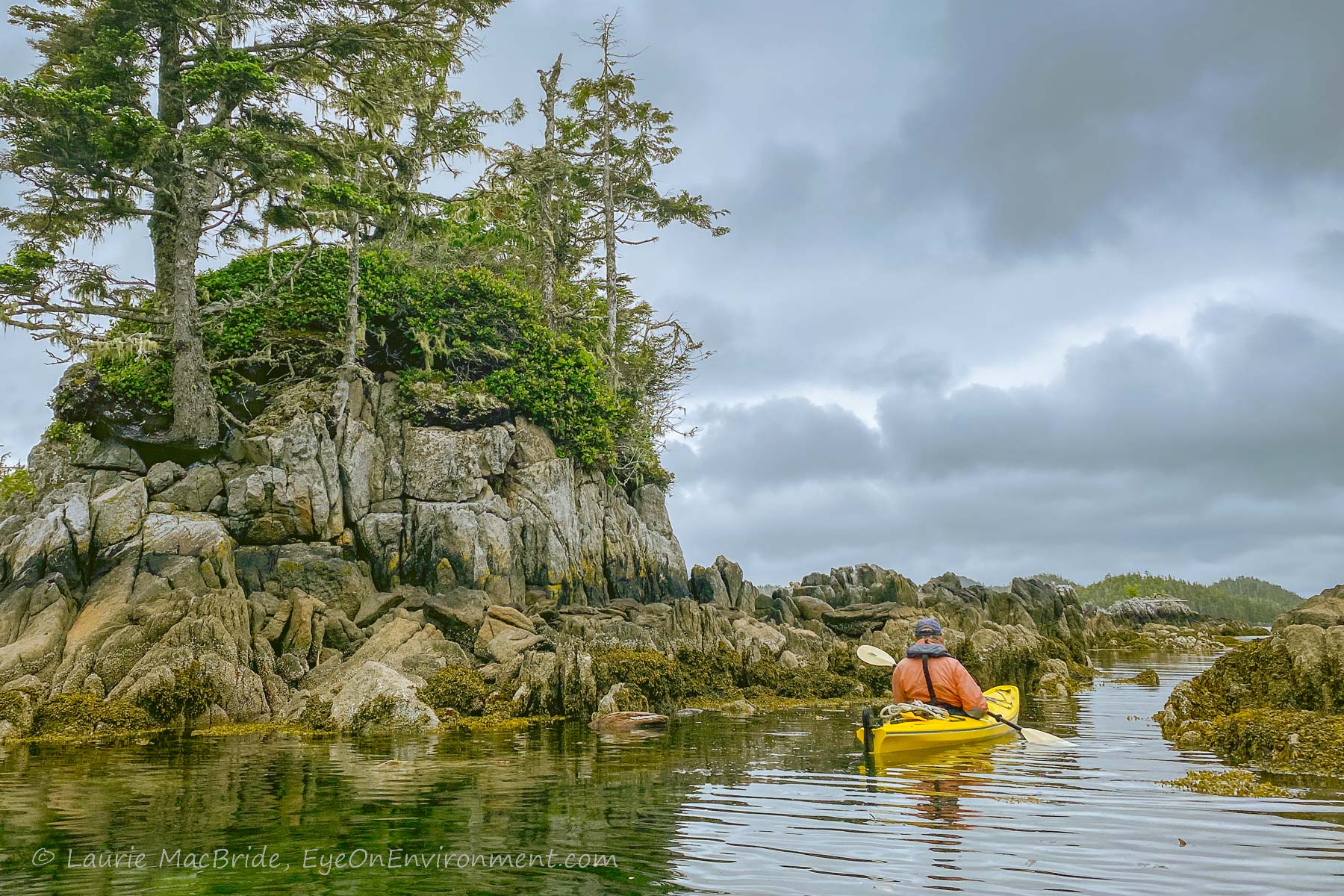Two days after we left Philip Inlet last June, we reached our second “new-to-us” anchorage – a secluded little hurricane hole in the Kittyhawk Group of islands in the Hakai Recreation Area.
The spot we’d chosen was guarded by an even narrower entrance than at Philip. Luckily it was low tide when we entered, so the rocks and reefs were at least partially visible. This was helpful, since the maze of islets and narrow passages leading in and out of the anchorage was confusing for first-timers who’d yet to get their bearings.
We dropped the hook – carefully – in a small pool, surrounded by rugged little islets, rocks and reefs.

When we’re underway or anchoring for the night, we keep a keen and constant eye on our chart, always trying to keep well away from boat-eating rocks like this – the kind that often lurk just below the surface at higher tides.
But once we’re safely moored and it’s time to launch the kayaks, those same rocks and reefs turn into compelling destinations.

Interesting how our perspective changes, once we’re down at water level in our little paddle-powered vessels: the rocks and reefs seem even bigger close-up, but they’re no longer worrisome – instead they are utterly fascinating, and exactly where we want to be.








